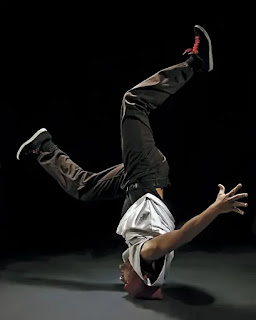Breakdancing: A Dynamic Journey Through History, and Global Popularity
Introduction:
Breakdancing, also known as b-boying or breaking, is a
dynamic and exhilarating street dance form that emerged from the hip-hop
culture in the Bronx, New York City, during the 1970s. It has since grown into
a global phenomenon, captivating audiences with its acrobatic moves, creativity,
and self-expression. In this extensive article, we will take a comprehensive
journey through the history of breakdancing, explore its intricate rules and
regulations, and delve into the reasons behind its immense global popularity.
By the end of this journey, you will gain a profound understanding of this
vibrant dance style that has become an integral part of youth culture
worldwide.
History:
The history of breakdancing is deeply intertwined with the
cultural and social movements of the 1970s in the Bronx, New York. From its
origins in block parties and street battles, breakdancing emerged as a form of
artistic expression for marginalized communities, primarily African American
and Latino youth.
Our exploration of breakdancing's history will encompass its
roots in funk, soul, and disco music, the influence of early pioneers like DJ
Kool Herc, Afrika Bambaataa, and the Rock Steady Crew, and the development of
the distinct elements of breaking: toprock, downrock, power moves, and freezes.
We will delve into the evolution of breakdancing as it
spread beyond the Bronx and gained international recognition. We will discuss
the impact of movies like "Wild Style" and "Beat Street" in
popularizing breakdancing and its subsequent influence on mainstream culture.
Furthermore, we will highlight the significant moments and
milestones in breakdancing history, including the emergence of renowned
breakdance crews, the establishment of international competitions such as the
Battle of the Year and Red Bull BC One, and the inclusion of breaking as an
official sport in events like the Youth Olympic Games.
Rules and Regulations:
Breakdancing, as a competitive dance form, has developed a
set of rules and regulations to ensure fairness, safety, and creativity in
competitions. In this section, we will delve into the intricate details of
these rules and their impact on the art of breaking.
We will begin by exploring the fundamental elements of
breakdancing, including toprock, downrock, power moves, and freezes. We will
discuss the techniques, variations, and stylistic approaches associated with
each element.
Our exploration of breakdancing's rules and regulations will
extend to the judging criteria used in competitions. We will discuss the
importance of musicality, creativity, execution, and originality in evaluating
breakdance performances. We will also explore the concept of
"battles" in breakdancing, where dancers engage in head-to-head
competitions to showcase their skills and style.
Popularity:
Breakdancing's popularity has transcended cultural
boundaries, captivating audiences around the world with its high-energy
performances and creative expression. In this section, we will explore the
reasons behind breakdancing's immense popularity and its impact on popular
culture.
We will discuss the global reach of breakdancing, from its
early days in the Bronx to its presence in major cities across continents. We
will examine the role of social media, television shows, and films in promoting
breakdancing and attracting a broader
audience. We will
also highlight the significance of events like the Red Bull BC One World Final
and the Olympics in bringing breakdancing to a wider stage.
Furthermore, we will delve into the cultural significance of
breakdancing, including its role in youth empowerment, community building, and
self-expression. We will discuss how breakdancing has become a platform for
social change, addressing issues such as inequality, discrimination, and
identity.
Conclusion:
Breakdancing, with its rich history, intricate rules, and
global popularity, has evolved into a dynamic and influential dance form. From
its humble beginnings in the streets of the Bronx to its recognition as an
Olympic sport, breakdancing has inspired generations of dancers and captivated
audiences worldwide. Through this comprehensive journey through the history,
rules, and popularity of breakdancing, we hope to deepen your appreciation for
this vibrant and culturally significant art form. Breakdancing's spirit of
creativity, self-expression, and community will continue to shape the dance
world and leave an indelible impact on generations to come.






.jpg)


.jpg)
.jpg)

Post a Comment